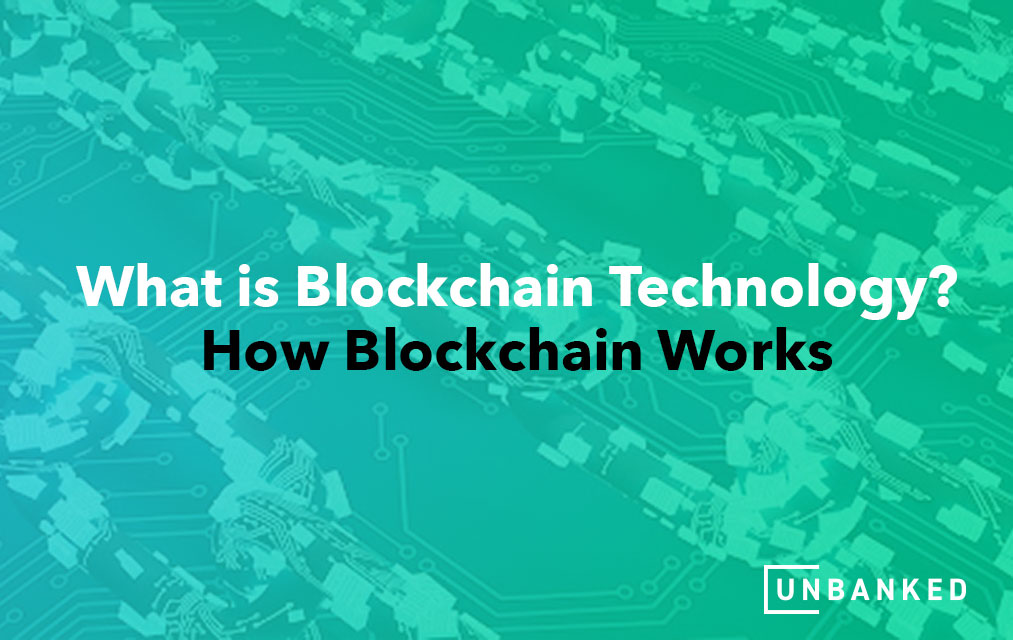Put succinctly, blockchain technology relies on a decentralized, distributed ledger that verifies the authenticity of a digital asset from unalterable historical data. Still too complicated? Don’t worry; you’re not alone. Think of Blockchain as a shared document where all users have access and editing rights to the original file. All changes get tracked, including what changed and which user changed it.
That’s the case with blockchain. Whatever the block-chained digital asset is, in the data blocks spread throughout the world is the history of that asset. Every modification ever made to it gets tracked, allowing you to verify if it’s the original file or if someone’s altered the material. Want to know more? Read on as we dive into all things blockchain.
Looking to learn more about the basics of Crypto? Check out our Crypto terms every investor should know.
Blockchain: At A Glance
A blockchain stores encrypted data blocks then chains those blocks together to form a chronological integrity verification chain.
Digital assets get distributed rather than copied or transferred, creating an unalterable historical record for the data asset.
That asset gets decentralized, enabling access and transparency for the public.
A transparent ledger of changes preserves the integrity of the asset file, creating trust and verifiable authenticity in the product.
Because of the built-in security measures and public ledger, businesses and entities of all types and sizes can use blockchain technology to safeguard and keep verified essential data assets.
Related: The 5 Best Blockchain Stocks & EFTs of 2021
What is Blockchain? 3 Key Concepts
Blockchain is considered a distributed ledger technology that makes the history of a digital asset unalterable and transparent. Blockchain uses decentralization and cryptographic hashing to maintain the integrity of that asset. Such methods include less fraud, user and data history transparency, and reduced risk when interfacing with someone unknown. Blockchain breaks down into three key concepts:
Nodes
To decentralize the asset chain, no one computer or organization can own its data. Instead, it is a ledger distributed via the “nodes” connected to the chain. Nodes can consist of any electronic device that maintains a copy of the blockchain and keeps the network operable. The network approves newly mined blocks for the chain. Since blockchains are transparent, every modification in the ledger can be easily viewed, checked, and verified. Each participant receives a unique identification number that shows their transactions. Blockchain assets then become more trusted because the information is public and verifiable against the historical record.
Blocks
Every chain consists of multiple “blocks” that include three essential elements:
- The data is contained in the block.
- A randomly created 32-bit number is called a nonce which generates a block header hash.
- The hash — a 256-bit number married to the nonce.
When the first block of a chain gets created, a nonce generates the cryptographic hash. The data in the block is then considered signed and stays connected to the nonce and hash in perpetuity unless it gets mined.
Miners
Miners create blocks on the chain through a process called “mining.”In a blockchain, every block comes with a unique nonce and hash. Each block also references the previous block’s hash in the chain, maintaining a chronological order of data blocks. Because each block in the chain references its preceding block, mining an existing block can be very difficult. Miners must find a nonce that generates an accepted hash. Still, because the nonce is 32 bits and the hash is 256 bits, miners must mine close to 4 billion possible nonce-hash combinations to find the right one.
Doing so requires special software to solve the dauntingly complex math problem. Adding to the complexity of the task, making a change to any block earlier in the chain needs every block after to be altered as well. That level of security makes it quite challenging to manipulate blockchain technology. It requires vast computing power and a lot of time. If a block gets successfully mined, every node on the network accepts and records the change. If a miner successfully adds a block to the blockchain, they receive 6.25 bitcoins as a reward. That’s roughly $300,000 currently. The compensation is reduced by half approximately every four years and is estimated to reach zero around 2140.

Primary Uses for Blockchain
Blockchain is a highly secure, public registry of encrypted data made virtually incorruptible and always verifiable. So, where is the technology being used today?
Cryptocurrencies
Blockchain’s most popular use is with cryptocurrencies. Cryptocurrencies are digital currencies like Bitcoin or Ethereum that may purchase goods and services, just like cash only in digital form. Unlike cash, however, cryptocurrencies use blockchain to establish a public ledger and cryptographic security system. This ensures online transactions stay secure while always recorded. Crypto now holds a market cap of over $1.5 trillion.
Related: Is Mainstream Crypto Adoption on the Horizon?
Reasons to Use Cryptocurrency
Security
Blockchain’s built-in security prevents theft since each currency has a verifiable identifier linking it to its owner.
Universal
Cryptocurrency is digital and therefore globally useable without the necessity of exchanging currencies or interference by central banks. With blockchain, crypto gets sent directly to anyone, anywhere in the world, without government or bank authority intermediaries. Transactions are secure and private while publicly verifiable.
Expanding Usability
Corporations have been testing the crypto waters for some time, with many large corporations now offering to pay employees in crypto and using crypto as an accepted method of payment for goods.
Arguments Against Cryptocurrency
Deregulated
Whereas some see deregulation as a good thing, most aren’t used to a currency without laws or policies to back it up. Because it’s not legal tender, cryptocurrency is not backed by the FDIC. That can be a risky venture for many.
Volatility
The crypto market lacks the stability of major currencies. While some became billionaires, most lost thousands because the market dips and peaks to great extremes.
Illegal Activity
Probably the most significant complaint against cryptocurrency is the privacy of transactions. Law enforcement agencies worry criminals can use crypto to fund illegal activities, making tracing such funds and transactions difficult.
Ethereum
Ethereum blockchain resulted from white pages published by a Russian-Canadian developer who proposed combining blockchain functionality with the execution of computer code. Ethereum blockchain allows developers to create sophisticated programs that communicate with one another through the blockchain.
Tokens
Ethereum programmers can create “tokens” for any digital asset, track its ownership and execute its functionality according to a set of programming instructions. Medical records, concert tickets, music files — pretty much anything — can become a token.
NFTs
Non-Fungible Tokens (NFTs) are blowing up right now. NFTs are unique blockchain-enabled tokens that store digital media, typically video, music, or art. Each NFT can verify authenticity, history, and sole ownership of the digital media piece. NFTs offer digital creators the ability to buy and sell their creations while getting proper credit and a fair share of profits.
TBD
Blockchain continues to disrupt the status quo, and research conducted by companies, governments, and digital professionals promises to revolutionize new industries as well. From identity security to decentralized media and medical data sharing, blockchain’s endgame is yet to be determined. The uses of blockchain will continue to expand as technology evolves and research yields new opportunities.
Do you want to get into cryptocurrencies? Create a crypto payment profile at Unbanked today!

The Future of Blockchain: 3 Predictions
While the future may not be written in stone, trends indeed lead in particular directions. Here are three predictions for the future of blockchain.
Eventual Governance
Governance models will enable a large and diverse consortium to efficiently approach decision-making, permission schemes, and even payments. These models will standardize information from different sources and capture new and more robust data sets. Corporations expect to see a scalable governance model for interactions across multiple blockchain networks to be an essential feature of their organization’s blockchain environment in the next one to three years.
Interconnectivity
Studies suggest organizations today believe assured governance and standards that allow interconnectivity among blockchain networks must be put in place before joining an industry-wide blockchain network.
Technological Synergy
More trusted data from the blockchain will inform and strengthen embedded algorithms. Blockchain will keep that data secure and audit each and every step in the decision-making process, sharpening insights driven by data that network participants trust.
The Revolution is Already Underway
Blockchain-enabled business models represent a seismic shift in how business gets conducted. Its impact on commerce is game-changing, especially considering an increasingly digital global economy and the decentralization of business models and stakeholders. A new wave of innovation is coming. Here are disrupters ahead of the game.
Smart Contracts At Work
Right now, when someone buys a ticket to a concert, broadway show, or other event, stakeholders like artists, promoters, venues, etc., get paid only when that original ticket is sold. If the buyer then resells that same ticket for a profit, the stakeholders don’t see any additional funds. But that could change. Blockchain technology, using tokens and smart contracts, can ensure content creators get appropriately paid, no matter how many times their work is resold or reused.
A smart contract can identify the contracted parties, along with third parties that may have rights to intellectual property, like a song or movie. Then, a digital asset-focused protocol can enable issuers to program rules into the management, use, and transfer of those assets. Blockchain’s immutability means that those coded rules are enforced in every transaction throughout the asset’s lifecycle. That means the artist can automatically receive a percentage of every sale of their product.
A Token Economy
Blockchain-based validation protocols can authenticate and compensate real people who interact with online advertisements instead of bots that pretend to be viewers. Right now, online advertisers rely on data provided by site publishers to determine the success of ads. That data is used to determine how much the publisher is owed for online exposure.
The current model is unreliable because much of the data given to publishers is fraudulent. Bots viewing ads instead of real people doesn’t help the business. Using blockchain-based technology, however, companies can create a “smart” advertising contract, which validates the data, and ensures the advertiser is paying the proper amount for the ad’s actual viewership.
Digital Identity Solutions
Digital identity solutions provide confidence about who people are interacting with online. A digital identity company can help businesses and individuals protect personal information with blockchain-enabled identity verification solutions. Identity solutions are designed to empower companies and their customers in understanding how and where their personal data is shared. Instead of sending Social Security numbers or private records to banks, credit cards, insurance providers, individuals can store their data in a single, highly secure account, authenticate their identity once through trusted validators, then instantly provide authenticated data to the requesting parties.

The Nitty Gritty
With innovative business models comes eventual regulation, best practices, and strategy. Advisors are left with old or incomparable rules as they evaluate the applications of this new commerce.
Taxes
Determination of crypto as a security, commodity, or cash equivalent affects income tax, indirect tax, and payroll tax significantly.
Technology
Tech consultants continue to debunk hype and educate stakeholders while clarifying what blockchain does and doesn’t do. The advent of new platforms and protocols requires innovative solutions to help bridge the technology from its current form to its enterprising future.
Looking for a Bank backed by blockchain security? Find out Why It’s Time to Get Unbanked!
Cryptocurrency Banking Available At Unbanked!
Cryptocurrencies are digital currencies that use blockchain to record and secure each transaction. Cryptocurrency can be used as a digital form of cash to pay for everything you usually purchase with credit cards or actual cash. Crypto can be bought using one of several trading platforms, then transferred upon purchase, with the blockchain technology recording the transaction and new owner in a public ledger.
The data is secured using cryptography, ensuring an irrefutable, timestamped, and secure record of every payment. Want a bank account secured by the power of blockchain? Open a new account at Unbanked now!
Related: Earn Free Cryptocurrency in 5 Easy Steps
Safe & Secure
Blockchain continues to revolutionize how companies and individuals conduct their business. With more secure, better encrypted, yet publicly transparent data at the core of blockchain’s identity, finances, health, government, education, art, and more, will be forever changed by new technologies. Jump on the bandwagon sooner or later, so you’re not playing catch up.





